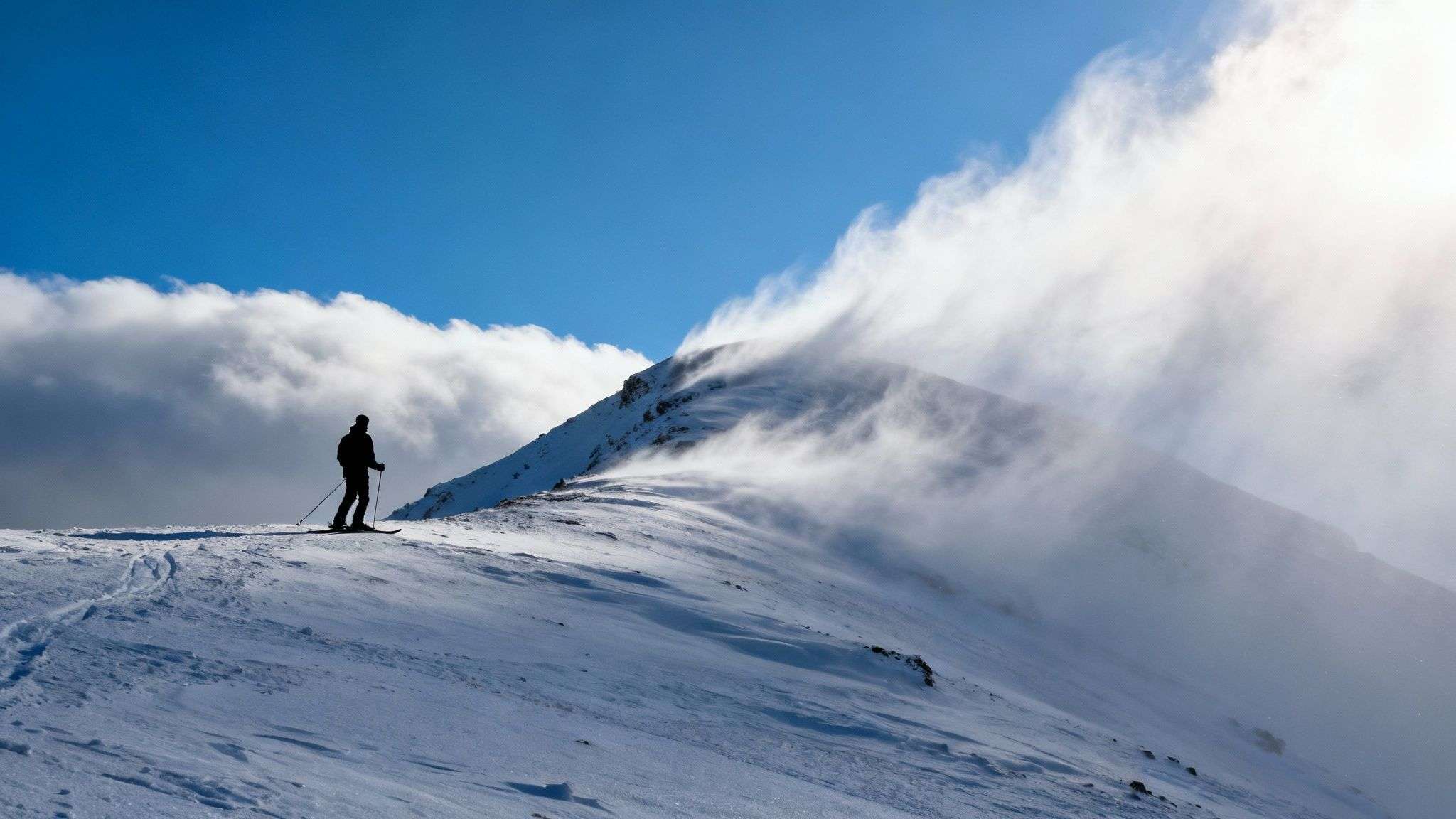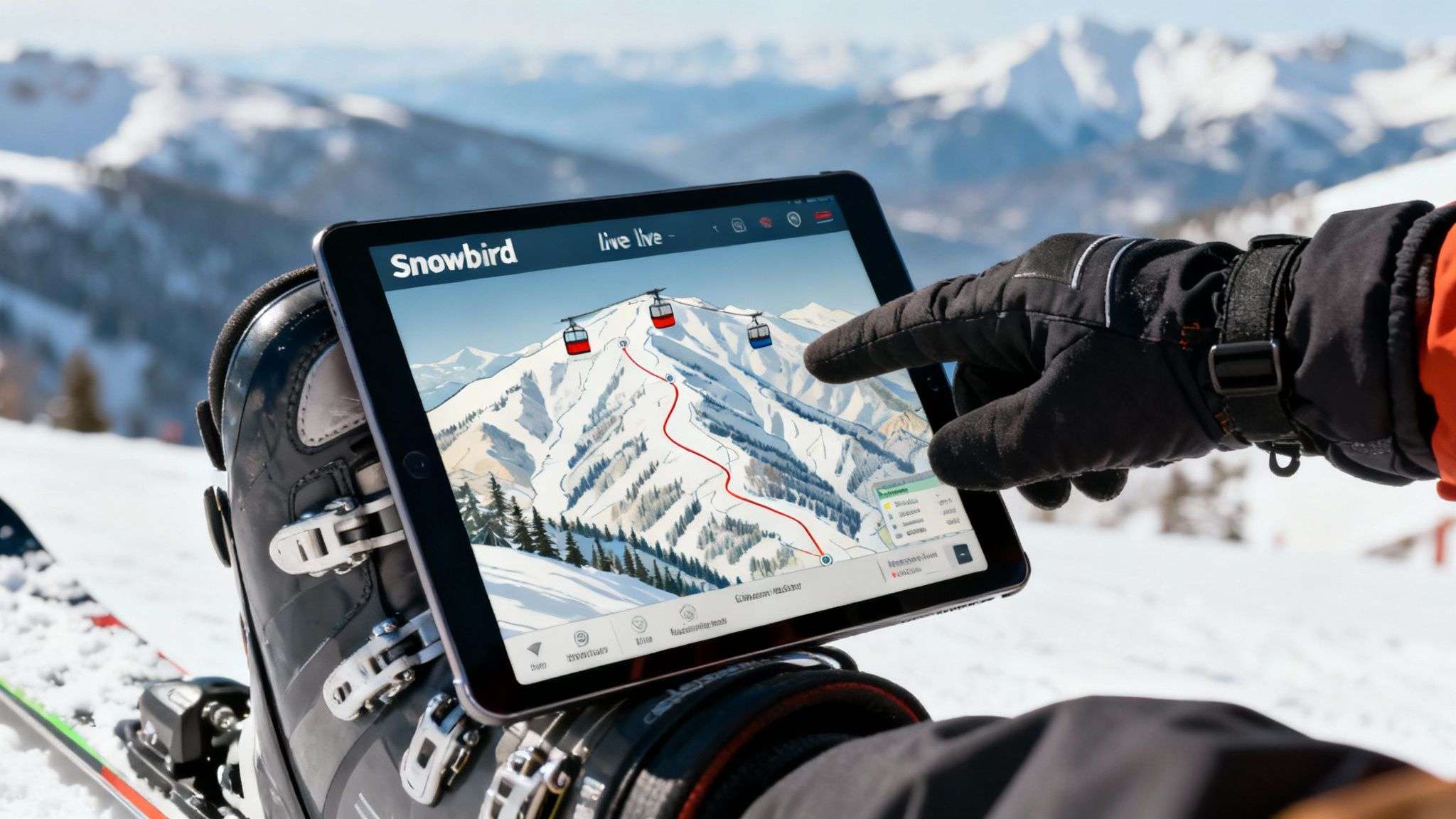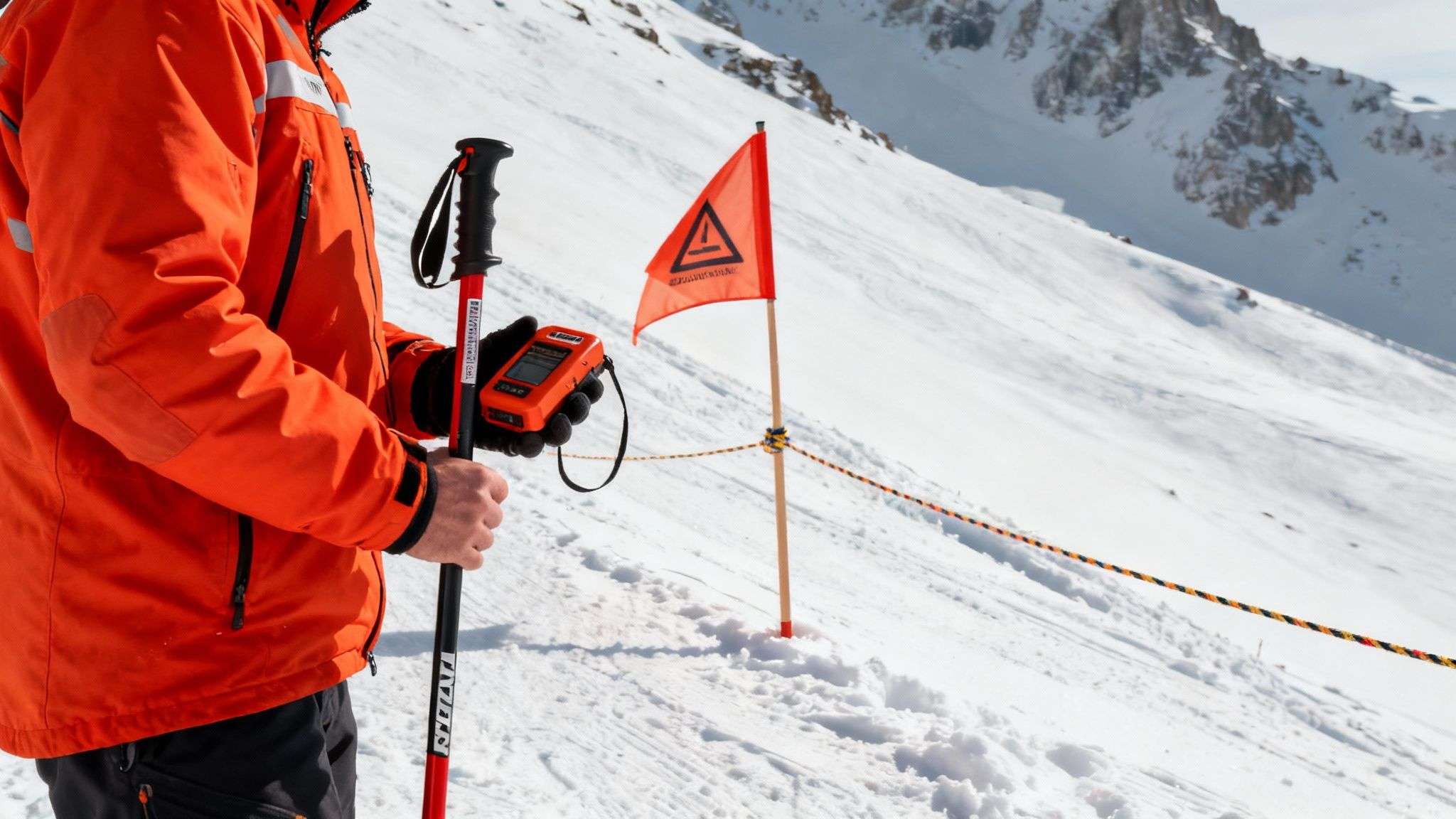Your Guide to Snowbird Ski Resort Conditions: Snow, Lifts & Roads
Get the latest Snowbird ski resort conditions. This guide covers how to read the snow report, check lift status, understand avalanche risk, and navigate LCC traffic for a perfect day on the mountain.
Planning a ski day at Snowbird? Knowing how to interpret the current Snowbird ski resort conditions—from snow depth and lift status to canyon road rules—is the key to a great day. This guide breaks down what to look for in the daily snow report, how to plan around lift operations, and how to safely navigate Little Cottonwood Canyon.
What are the current conditions at Snowbird?
Before you head up the canyon, a quick check of the day's conditions is essential for a successful trip. We pull the most critical live data together so you can make an informed decision about your day at Snowbird. This snapshot covers everything from new snow to the road status in Little Cottonwood Canyon.
Snowbird Live Conditions Snapshot
Here's a quick look at the most critical data for skiing at Snowbird today. Use this to gauge what the mountain is offering and what to expect from the moment you arrive.
| Metric | Current Status | Notes for Skiers |
|---|---|---|
| New Snow (24hr) | [Recent Snowfall] inches | Fresh snow means soft turns, but check for crowded areas. |
| Base Depth | [Current Snow Depth] inches | Indicates solid coverage across most terrain. |
| Lift Status | [Number] / [Total] Lifts Open | Major lifts are spinning; check for any wind holds on upper mountain. |
| Terrain Open | [Percentage]% Open | Most of the mountain is accessible. Check the resort map for specific trail closures. |
| LCC Road Status | [Road Status] | [Traction Law / Traffic Notes] - plan your drive accordingly. |
A great day at Snowbird starts long before you click into your bindings. It begins with understanding the mountain's current mood—from the snow on the ground to the wind in the air—and planning accordingly.
How do I read the Snowbird snow report?
A great day at Snowbird starts with knowing how to really read the snow report, looking past just the 24-hour snowfall number. Think of the report like a recipe: the snow base, new snow, and surface quality all play a part in creating the perfect conditions.

Snow Base Depth
First, look at the snow base. This is the total settled snow depth measured mid-mountain. A deep, solid base—think 60-80 inches or more—is what buries the rocks and stumps. A huge dump on a thin base can feel sketchy, but just a few inches of fresh snow on a deep base can ski like a dream.
New Snow and Surface Conditions
This is the number everyone gets hyped about, but context is key. The report describes the surface conditions, which tells you how that new snow actually feels underfoot.
- Powder: The light, fluffy stuff Little Cottonwood Canyon is famous for.
- Packed Powder: Fresh snow that's been groomed or skied, making for a soft, fun carving surface.
- Machine Groomed: No new snow; groomers have tilled the snowpack, leaving perfect corduroy.
- Variable Conditions: A mix of everything—powder, wind-buff, and ice, sometimes on the same run.
The key takeaway is that the relationship between new snow and the base is what truly matters. A 12-inch storm on an 80-inch base will ski infinitely better than the same storm on a shallow 30-inch base.
For a deeper dive into how this data comes together, check our guide on Snowbird snow reports. To see how weather patterns influence these numbers, our post on the weather at Snowbird, Utah is a must-read.
How should I plan my day around lifts and terrain?
An "Open" sign on the resort status doesn't mean every lift is spinning. Smart skiers build their game plan by looking at the live lift and trail maps. Understanding why lifts go on hold—usually due to wind or avalanche control—is key to finding untracked lines while others are waiting in queues.

Powder Day Game Plan
On a powder day, avoid the crowds waiting for the Tram or Mineral Basin to open. Here are a few local tips:
- Start at Gad Valley: The Gadzoom and Gad 2 lifts often open first, offering access to fantastic tree skiing while patrol clears the upper mountain.
- Use Baby Thunder: This hidden gem accesses low-angle powder fields that many people overlook early in the day.
- Watch the Tunnel: Ski laps on the Peruvian Express while waiting for the tunnel to Mineral Basin to open.
A "wind hold" isn't a bad sign; it's a strategic opportunity. While crowds wait for the upper mountain, savvy skiers can yo-yo laps on lower lifts like Gadzoom, skiing powder with almost no lines.
By checking the live Snowbird ski resort conditions map on your phone, you can see exactly when terrain opens and reposition yourself to be one of the first ones there.
How do I check mountain safety and road conditions?
Snowbird's legendary terrain demands respect. Understanding the daily avalanche forecast and navigating canyon traffic are critical for a safe and enjoyable day.

Avalanche Forecast
Every skier should check the daily forecast from the Utah Avalanche Center (UAC). After a big storm, the Snowbird Ski Patrol performs avalanche mitigation work, which is why lifts often have staggered openings. Respect all rope lines and posted warnings; terrain beyond the resort boundary is the backcountry, where you are responsible for your own safety. The massive snowfall during the historic 2022-2023 season, detailed in Snowbird’s record-breaking year on YouTube, highlighted the importance of this work.
Little Cottonwood Canyon Traffic
A perfect day starts with a smooth drive. Before you leave, check the UDOT traffic cameras for a live look at congestion.
When UDOT enacts the Traction Law, it is mandatory. Your vehicle must have either 4WD/AWD with M+S tires, or 2WD with proper snow tires (3PMSF). Having the right equipment is crucial for safety and keeping traffic moving. For a complete breakdown of travel strategies, see our Little Cottonwood Canyon traffic guide.
Frequently Asked Questions
What time of year is best for powder at Snowbird?
The sweet spot for deep powder days is typically from late January through early March, when storm cycles are consistent and temperatures are cold. However, Snowbird's high elevation means you can score surprise powder days even in March and April.
How accurate is the Snowbird snow forecast?
For the next 24–48 hours, the forecast is generally reliable. For long-range planning, look at broader patterns from sources like OpenSnow. Always check the forecast the morning you plan to ski, as conditions in Little Cottonwood Canyon can change rapidly.
What happens if the canyon road closes?
When UDOT closes LCC, the resort goes into interlodge, a safety protocol requiring everyone to stay inside until the road is deemed safe. It's a unique part of the Snowbird experience—just relax at a lodge and wait for the all-clear.
For the latest travel times, live traffic data, and camera feeds to plan your drive up the canyon, head over to the Wasatch Travel Helper at https://wasatchroads.com.